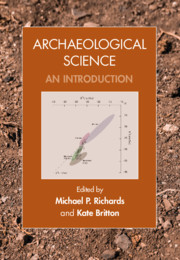Book contents
- Archaeological Science
- Archaeological Science
- Copyright page
- Contents
- Figures
- Tables
- Contributors
- Acknowledgements
- Part I Introduction
- Part II Biomolecular Archaeology
- Part III Bioarchaeology
- 7 Human Osteology
- 8 Dental Histology
- 9 Geometric Morphometrics
- Part IV Environmental Archaeology
- Part V Materials Analysis
- Part VI Absolute Dating Methods
- Index
- References
7 - Human Osteology
from Part III - Bioarchaeology
Published online by Cambridge University Press: 19 December 2019
- Archaeological Science
- Archaeological Science
- Copyright page
- Contents
- Figures
- Tables
- Contributors
- Acknowledgements
- Part I Introduction
- Part II Biomolecular Archaeology
- Part III Bioarchaeology
- 7 Human Osteology
- 8 Dental Histology
- 9 Geometric Morphometrics
- Part IV Environmental Archaeology
- Part V Materials Analysis
- Part VI Absolute Dating Methods
- Index
- References
Summary
The osteological study of human remains from archaeological contexts can provide a wealth of information on past peoples, principally because it involves examining the primary data: the people themselves. Human osteologists use the physical remains of the human body to reconstruct behaviour, demography, growth and development, and health at both the individual and the population level, working from a biocultural perspective (Goodman and Leatherman 1998).
- Type
- Chapter
- Information
- Archaeological ScienceAn Introduction, pp. 147 - 169Publisher: Cambridge University PressPrint publication year: 2020
References
- 1
- Cited by



